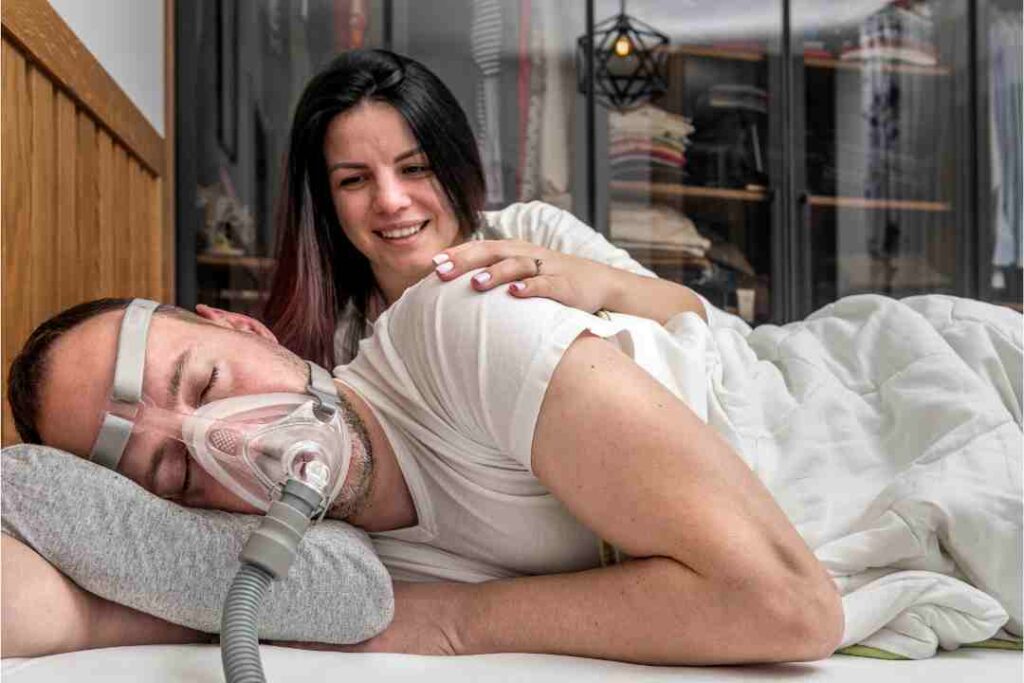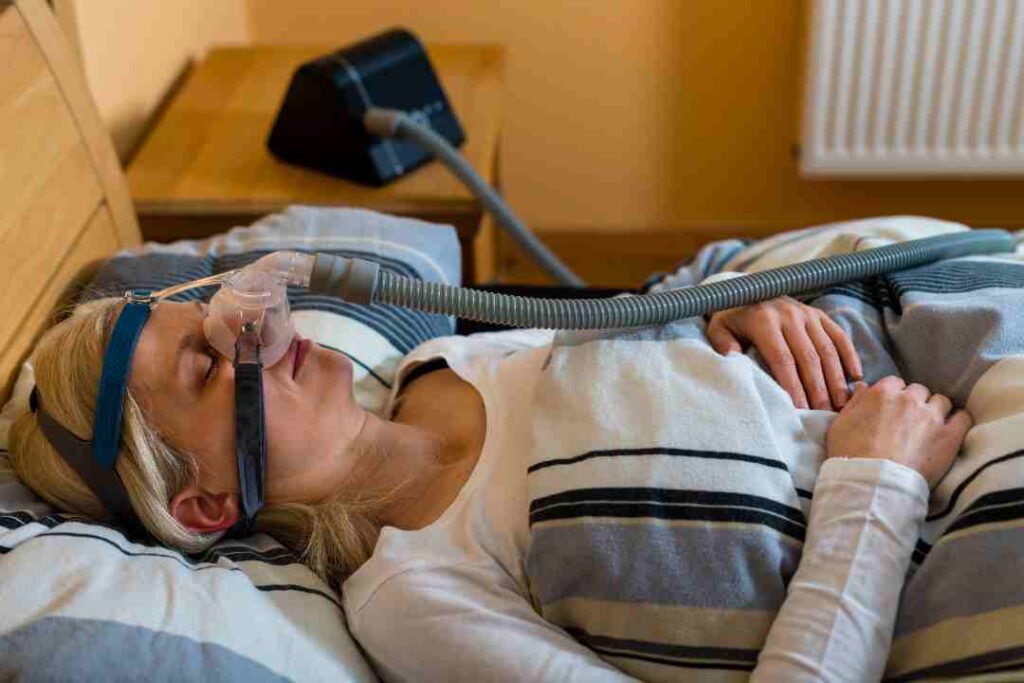In the world of sleep apnea treatment, CPAP (Continuous Positive Airway Pressure) therapy has become a popular solution. CPAP machines use a mask to deliver a constant flow of air pressure, helping to keep the airways open during sleep. However, the success of CPAP therapy greatly depends on finding the perfect fit for your mask. Understanding the importance of a well-fitted CPAP mask is crucial in ensuring the effectiveness of your treatment.
Understanding the Importance of a Well-Fitted CPAP Mask
When it comes to CPAP therapy using the CPAP machine Australia, the mask plays a pivotal role in delivering the desired air pressure to keep your airways open throughout the night. A poorly fitted mask can result in air leaks, and discomfort, and even make you want to abandon the therapy altogether.
One of the primary goals of using a CPAP mask is to prevent apneas and hypopneas – interruptions or reductions in breathing during sleep – which is the hallmark of sleep apnea. A well-fitted mask helps to maintain a constant seal, ensuring that the air pressure generated by the CPAP machine is effectively delivered to your airways.
Moreover, a properly fitted mask not only improves the efficacy of the treatment but also enhances your comfort, allowing you to sleep through the night without any disruptions. A comfortable and well-fitted mask is crucial for experiencing the full benefits of CPAP therapy.
The Role of CPAP Masks in Sleep Apnea Treatment
Sleep apnea is a sleep disorder characterized by the repeated interruption of breathing during sleep, often caused by a partial or complete collapse of the airway. CPAP therapy, with the help of a well-fitted mask, provides a continuous flow of pressurized air, which acts as a splint to keep the airway open.

By maintaining an open airway, CPAP therapy prevents the collapse and obstruction of the respiratory system, allowing for uninterrupted breathing throughout the night. This not only improves sleep quality but also reduces the frequency and severity of apneas and hypopneas, improving overall health and well-being.
How a Poorly Fitted Mask Can Affect Your Therapy
While the benefits of CPAP therapy are well-established, a poorly fitted mask can significantly impact its effectiveness. An ill-fitting mask may result in air leaks, which can reduce the desired air pressure required to keep your airways open. This can lead to disruptions in sleep, leaving you feeling fatigued and sleepy during the day.
Additionally, air leaks from a poorly fitted mask can cause dryness and irritation in the eyes, nose, and mouth. This discomfort may further deter your compliance with CPAP therapy, reducing its overall effectiveness. Visit https://northbergennjdentist.com/the-dos-and-donts-of-cataract-surgery/ to read about The Do’s and Don’t’s of Cataract Surgery.
A poorly fitted mask can also lead to excessive noise, making it difficult for both you and your sleeping partner to get a restful night’s sleep. The noise from air leaks or loose straps can disrupt your sleep and compromise the success of your therapy.
Furthermore, a poorly fitted mask may cause pressure sores or skin irritation due to constant rubbing or friction. This can be uncomfortable and may require additional treatment or adjustments to the mask.
Another issue that can arise from a poorly fitted mask is mask displacement during sleep. If the mask is not properly secured, it may shift or move, leading to air leaks and reduced effectiveness of the therapy. This can be frustrating as it interrupts your sleep and may require you to readjust the mask multiple times throughout the night.
It’s important to note that everyone’s facial structure is unique, and finding the right mask fit may require some trial and error. Working closely with your healthcare provider or a CPAP specialist can help ensure that you find a well-fitted mask that meets your specific needs and provides optimal therapy.
Different Types of CPAP Masks
CPAP masks come in various designs, each catering to different needs and preferences. Understanding the features and benefits of different types of masks can help you make an informed decision about which mask is right for you.
Nasal Masks
Nasal masks are one of the most commonly used CPAP mask types. These masks cover your nose and are held in place with straps. Nasal masks provide a good balance of comfort and effectiveness, making them suitable for a wide range of people. They are ideal for individuals who breathe mainly through their nose during sleep.
The design of nasal masks allows for a wider field of vision compared to full face masks, making them less obstructive. They are also a good option for those who may experience claustrophobia or have facial hair that makes it difficult to achieve a proper seal with a full face mask.
Full Face Masks
Full face masks cover both your mouth and nose, providing a complete seal around your face. These masks are suitable for individuals who breathe through both their nose and mouth during sleep or those who experience nasal congestion and require the option to breathe through their mouth.
Full face masks are generally bulkier than nasal masks, but they offer excellent stability and a secure fit. They are ideal for people who tend to sleep on their backs or change positions frequently throughout the night.
While effective, some individuals may find full face masks to be slightly more uncomfortable due to their larger size. However, advancements in mask technology have resulted in more lightweight and streamlined options.
Nasal Pillow Masks
Nasal pillow masks are the smallest and most lightweight CPAP mask option available. These masks use small pillows or cushions that seal against your nostrils, delivering the pressurized air directly into your nasal passages.
As the name suggests, nasal pillow masks are designed to be inserted into the nostrils, minimizing contact with the face. This design provides a less intrusive feel, making it suitable for individuals who prefer a mask with a minimalistic design.
Additionally, nasal pillow masks offer a better field of vision compared to larger masks, allowing you to watch TV, read, or wear glasses without obstruction. These masks are an excellent option for individuals who feel claustrophobic or experience discomfort with traditional nasal or full face masks.
Factors to Consider When Choosing a CPAP Mask
Choosing the right CPAP mask is a personal decision that depends on various factors. Understanding these factors can help guide your decision-making process.

Comfort and Fit
Comfort should be a key consideration when selecting a CPAP mask. A mask that fits well and feels comfortable on your face is more likely to result in a successful therapy experience. Look for masks with adjustable straps and cushioning materials to ensure a secure and comfortable fit.
Remember that everyone’s face is unique, so what works for someone else may not work for you. Take the time to try different masks and assess their comfort levels before making a final decision.
Your Breathing Style
Your breathing style during sleep can also influence your choice of CPAP mask. If you primarily breathe through your nose, a nasal mask may be sufficient. However, if you tend to breathe through your mouth or experience nasal congestion, a full face mask or nasal pillow mask may be more suitable.
Consider consulting with your healthcare provider or a sleep specialist to determine your breathing style and the appropriate mask type for your needs. Click here to read about Dysfunctional breathing and reaching one’s physiological limit as causes of exercise-induced dyspnoea.
Lifestyle and Personal Preferences
Considering your lifestyle and personal preferences is essential when choosing a CPAP mask. If you are an active sleeper or tend to move around during the night, a mask that offers stability and minimal disruptions may be preferable.
Similarly, if you wear glasses or enjoy reading or watching TV before bed, a mask that offers a wider field of vision may be an important consideration.
Reflect on your daily activities and habits to identify any specific requirements or preferences that may influence your mask choice.
Trying on CPAP Masks: What to Expect
Before committing to a particular CPAP mask, most suppliers offer the option to try on different masks and assess their fit and comfort. Understanding what to expect during the fitting process can help make the experience more seamless.
The Fitting Process
During a mask fitting, you’ll be given the opportunity to try on various masks and assess their fit. Trained professionals will guide you through the process, ensuring that each mask is properly adjusted to achieve an optimal seal.
They may ask you to lie down or simulate different sleeping positions to evaluate the mask’s stability and effectiveness in maintaining a seal. Don’t hesitate to provide feedback on comfort, as this will help them make necessary adjustments to ensure a better fit.
Remember that the fitting process may take some time, and trying on multiple masks is typical. Be patient and communicate openly with the fitting specialist to find the best mask for your needs.
Adjusting for Comfort
Once you select a mask that fits well and maintains a proper seal, the fitting specialist will help you adjust the straps and cushions for optimal comfort. They may provide tips on how to properly position the mask and make simple adjustments to enhance your overall experience.
Don’t hesitate to ask questions or voice any concerns you have during the fitting process. The fitting specialist is there to support you and ensure your comfort with the chosen mask.
Cleaning and Maintenance of Your CPAP Mask
Once you’ve found the perfect CPAP mask, it’s essential to establish a regular cleaning routine to maintain its longevity and hygiene.
Regular Cleaning Routine
Your CPAP mask can accumulate oils, dirt, and bacteria over time, which can compromise the effectiveness of the treatment and increase the risk of respiratory infections. It’s important to clean your mask regularly to keep it in optimal condition.
Start by disassembling the mask according to the manufacturer’s instructions. Most masks have removable components that can be washed separately. Use warm water and a mild, fragrance-free soap to clean the mask, straps, and cushions. Avoid using harsh chemicals or solutions containing alcohol, as these may degrade the materials.
After cleaning, rinse all components thoroughly and allow them to air dry in a clean, well-ventilated area. Avoid exposing the mask to direct sunlight or heat sources as this can damage the materials.
Establish a regular cleaning schedule and stick to it to ensure the longevity and effectiveness of your CPAP mask.
When to Replace Your Mask
Over time, the components of your CPAP mask may wear out or become less effective. It’s important to monitor your mask for signs of deterioration and replace it as necessary.
Common signs that your mask may need replacing include excessive air leaks, degraded cushioning or straps, or difficulty maintaining a proper seal. If you notice any of these issues or experience an increase in discomfort during therapy, it may be time to consider a new mask.
Consult with your healthcare provider or a CPAP supplier for guidance on when to replace your mask. They can provide recommendations based on your individual needs and usage.Conclusion: Finding the perfect CPAP mask is crucial for the success of your sleep apnea therapy. Understanding the importance of a well-fitted mask, exploring different mask types, considering factors like comfort and fit, and establishing a regular cleaning routine will help you select the right mask and ensure a comfortable and effective CPAP therapy experience. Remember to consult with a healthcare professional or CPAP supplier to receive appropriate guidance tailored to your specific needs. With the perfect fit, you’ll be on your way to better sleep and improved overall health.

